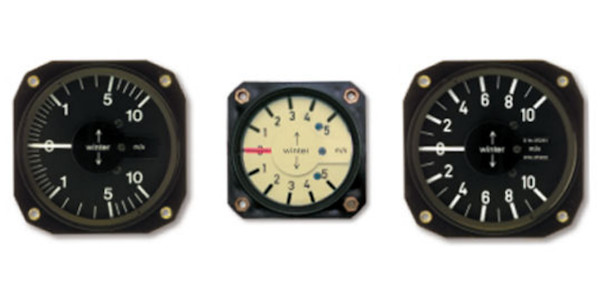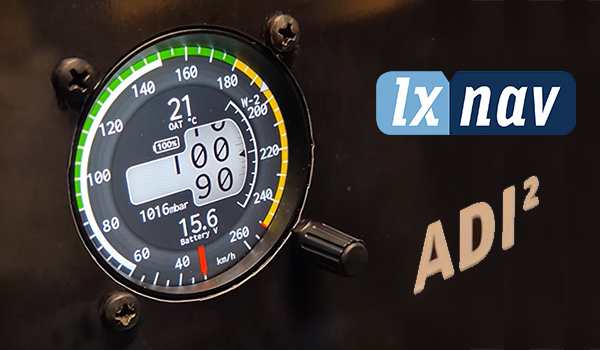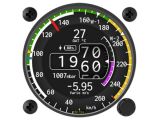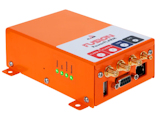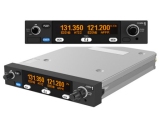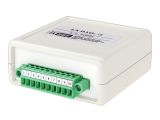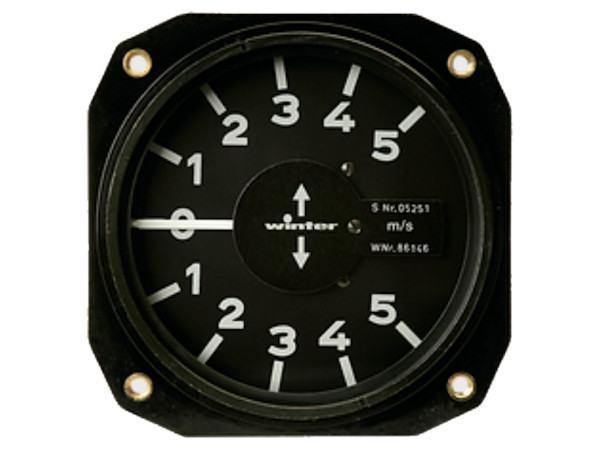
STAUSCHEIBEN-VARIOMETER 5 StV 5 und 5 StV 5 "S" (JAA FORM ONE)
- Messbereich: +/- 5 m/sec.
- Teilstrichabstand: 1 m
- Zeitkonstante: 3,0 (5StV5) oder 1,8 (5StV5"S") sec
- Durchmesser: 80 mm
- Einbautiefe: 68 mm
- Gewicht: 0,450 (5StV5) oder 0,560 (5StV5"S") kg
- inkl. Ausgleichsgefäss 0,45l (5StV5) oder 0,9l (5StV5"S")
Stauscheiben-Variometer messen die Luftdruckänderung, die mit Flughöhenwechseln verbunden sind. Der Aufbau besteht aus einer zylindrischen Kammer mit einer präzise eingepassten drehbaren Stauscheibe, die auf Lochsteinen stoßgesichert gelagert ist und durch eine Spiralfeder in Mittelstellung gehalten wird. Durch die Stauscheibe wird die Kammer in zwei Teile geteilt; der eine Teil wird mit dem statischen Druck verbunden, der andere Teil wird an ein Ausgleichsgefäß angeschlossen, in dem ein Luftvolumen gegen Wärmeeinflüsse isoliert ist. Durch den engen Spalt zwischen Stauscheibe und Kammerwandung werden Druckunterschiede ausgeglichen. Beim Sinken oder Steigen des Flugzeuges ändert sich der statische Luftdruck. Es entsteht eine Druckdifferenz zwischen den beiden Kammerteilen. Die dadurch hervorgerufene Auslenkung der Stauscheibe dient als Maß für die Vertikal-Geschwindigkeit und wird auf den Zeiger des Instruments übertragen. Von großer Bedeutung ist bei Variometern die Anzeigegeschwindigkeit. Im Leistungssegelflug wünscht man sich schnellanzeigende Variometer, um Aufwindgebiete sicher erkennen und optimal ausnützen zu können.
Als Maß für die Anzeigegeschwindigkeit dient die Zeitkonstante. Sie definiert diejenige Zeit, die ein Gerät braucht, um nach einer plötzlichen Änderung der Vertikal-Geschwindigkeit 65% des Endwertes zu erreichen. Je schneller ein Variometer anzeigt, desto kleiner ist seine Zeitkonstante. Stauscheiben-Variometer mit großem Messbereich, z.B. 5 StV 5 (±10 m/Sek. und ±15 m/Sek.) haben kleine Zeitkonstanten. Um bei Variometern mit dem gebräuchlichsten Messbereich ±5 Meter/Sekunde eine ähnlich schnelle Anzeige zu erhalten, muss das Volumen des Ausgleichsgefäßes vergrößert werden.
Das Variometer kann mit Skalenring ausgerüstet werden.
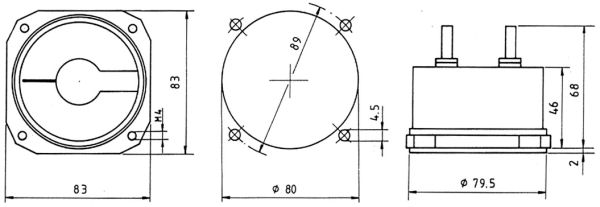
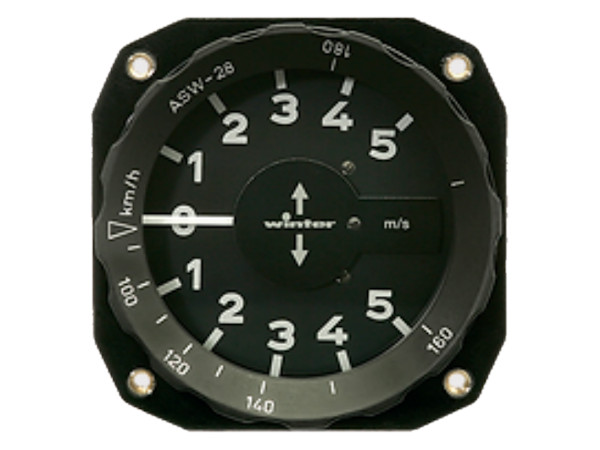
Weitere Informationen und Modelle (Preise auf Anfrage) [hier]
